INSTITUT SUPERIEUR D'ANTHROPOLOGIE
INSTITUTE OF ANTHROPOLOGY
ONLINE COURSES / COURS A DISTANCE
SUMMER TERM : JULY 2014
REGISTER NOW
TURQUIE – 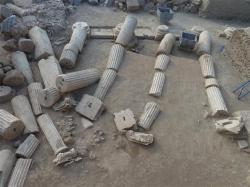 Laodicea- Columns that are believed to be 1,500 years old have been unearthed during excavation and restoration works in the ancient city of Laodicea, a city established in 3 B.C. in the western province of Denizli. According to information provided by the Culture and Tourism Ministry, a team led by Professor Celal Şimşek has been carrying out work since 2003 on the Laodicean Church, temple, northern agora, southern porch, eastern pool, as well as the emperor Septimius Severus Monumental Fountain. Recent works have unearthed the monumental columns that collapsed during an earthquake in 494 A.D. Examinations showed that the earthquake ruined the 1,080-meter-high columns to the eastern side of the structure, and that they remained seven meters underground for 1,500 years because of western winds and plant cover. According to experts, when excavation works are complete, the columns will be restored. The northern agora, which is monumental for Anatolian archaeology, will finally be revived after 1,500 years. Laodicea is very important as it contains several clues to the city’s economy and trade in the past. It was one of the chief seats of Christianity. It is one of seven churches of Asia that is mentioned in the Book of Revelations. Last June, the ancient city was added to UNESCO’s list of World Heritage sites. http://www.hurriyetdailynews.com/centuries-old-columns-unearthed-in-laodicea.aspx?pageID=238&nID=66061&NewsCatID=375
Laodicea- Columns that are believed to be 1,500 years old have been unearthed during excavation and restoration works in the ancient city of Laodicea, a city established in 3 B.C. in the western province of Denizli. According to information provided by the Culture and Tourism Ministry, a team led by Professor Celal Şimşek has been carrying out work since 2003 on the Laodicean Church, temple, northern agora, southern porch, eastern pool, as well as the emperor Septimius Severus Monumental Fountain. Recent works have unearthed the monumental columns that collapsed during an earthquake in 494 A.D. Examinations showed that the earthquake ruined the 1,080-meter-high columns to the eastern side of the structure, and that they remained seven meters underground for 1,500 years because of western winds and plant cover. According to experts, when excavation works are complete, the columns will be restored. The northern agora, which is monumental for Anatolian archaeology, will finally be revived after 1,500 years. Laodicea is very important as it contains several clues to the city’s economy and trade in the past. It was one of the chief seats of Christianity. It is one of seven churches of Asia that is mentioned in the Book of Revelations. Last June, the ancient city was added to UNESCO’s list of World Heritage sites. http://www.hurriyetdailynews.com/centuries-old-columns-unearthed-in-laodicea.aspx?pageID=238&nID=66061&NewsCatID=375
INDE – 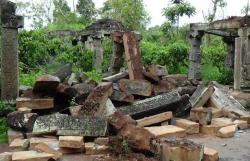 Punchavayal - A portion of the Gopuram of the ancient Vishnu temple at Punchavayal, near Panamaram, in Wayanad was collapsed in rain on Sunday night. It was suspected that many precious sculptors on the stone walls and pillars of the temple had been destroyed. The style of the sculptures and a stone edict in old Kannada script on the wall of the Janardhana temple show that the temples might have been built during the reign of the Hoysala or the Vijayanagara dynasties from the 12th to the 14th centuries. The huge stone pillars were brought from Karnataka. The ‘Jaladhara’ inscriptions on a copper plate in a Jain temple at nearby Varadoor confirmed it, Dr. Varier said. The temples were built in Jain style with Garbhagudi (sanctum sanctorum), Navarangam (a place for sub-deities), Kalasa Mandapam and Gopuram. T. Sreelakshmi, superintending archaeologist, Archaeological Survey of India, Thrissur circle, said the procedures to declare the temples as national monuments were nearing completion and the announcement was expected to be made in 10 days
Punchavayal - A portion of the Gopuram of the ancient Vishnu temple at Punchavayal, near Panamaram, in Wayanad was collapsed in rain on Sunday night. It was suspected that many precious sculptors on the stone walls and pillars of the temple had been destroyed. The style of the sculptures and a stone edict in old Kannada script on the wall of the Janardhana temple show that the temples might have been built during the reign of the Hoysala or the Vijayanagara dynasties from the 12th to the 14th centuries. The huge stone pillars were brought from Karnataka. The ‘Jaladhara’ inscriptions on a copper plate in a Jain temple at nearby Varadoor confirmed it, Dr. Varier said. The temples were built in Jain style with Garbhagudi (sanctum sanctorum), Navarangam (a place for sub-deities), Kalasa Mandapam and Gopuram. T. Sreelakshmi, superintending archaeologist, Archaeological Survey of India, Thrissur circle, said the procedures to declare the temples as national monuments were nearing completion and the announcement was expected to be made in 10 days
http://www.thehindu.com/news/national/kerala/part-of-ancient-kerala-temple-caves-in/article5981991.ece
CHINE – 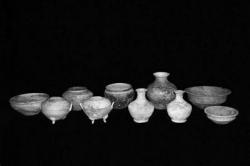 Xi'an – The 45 graves excavated last year in Shaanxi Province are assumed to be the tombs of the handicraft men who once created the world-acclaimed Terracotta Warriors discovered near the mausoleum of China's first Emperor Qin Shihuang (260-210 B.C.) in the province's suburbs.Five kilometers east to the Mausoleum of Qin Shihuang, the 45 graves are filled with the evidence of curled legs, a unique pose of those deceased buried during the Qin Dynasty. In spite of the comparatively low social statuses demonstrated by the small scale and meager decoration of the graves, the potteries discovered there are inscribed with the Chinese character "li" (丽), which indicated that the owners of the tombs hailed from Liyi Town, a place used to accommodate numerous craftsmen and construction workers who were designated to build the mausoleum of Emperor Qin. Although the identities of the tomb owners still needs to be confirmed, Sun Weigang, deputy researcher with the Shaanxi Province Archaeological Research Institute, said the character "li" is an important factor in solving the graves' mystery. According to the "Shi Ji" or "Records of the Grand Historian," Liyi Town was built in 231 B.C., right near the mausoleum, with some 30,000 families moving in.
Xi'an – The 45 graves excavated last year in Shaanxi Province are assumed to be the tombs of the handicraft men who once created the world-acclaimed Terracotta Warriors discovered near the mausoleum of China's first Emperor Qin Shihuang (260-210 B.C.) in the province's suburbs.Five kilometers east to the Mausoleum of Qin Shihuang, the 45 graves are filled with the evidence of curled legs, a unique pose of those deceased buried during the Qin Dynasty. In spite of the comparatively low social statuses demonstrated by the small scale and meager decoration of the graves, the potteries discovered there are inscribed with the Chinese character "li" (丽), which indicated that the owners of the tombs hailed from Liyi Town, a place used to accommodate numerous craftsmen and construction workers who were designated to build the mausoleum of Emperor Qin. Although the identities of the tomb owners still needs to be confirmed, Sun Weigang, deputy researcher with the Shaanxi Province Archaeological Research Institute, said the character "li" is an important factor in solving the graves' mystery. According to the "Shi Ji" or "Records of the Grand Historian," Liyi Town was built in 231 B.C., right near the mausoleum, with some 30,000 families moving in.
http://www.china.org.cn/arts/2014-05/06/content_32301750.htm?
ROYAUME UNI - Toton - Archaeologists may have found evidence of the oldest recorded mill in Toton. Evidence of the Anglo-Saxon mill, which appeared in the Doomsday Book, was found by the Chilwell-based Trent and Peak Archaeological team in a two-week project at Manor Farm Recreation Ground.The volunteers laid out reels of measuring tape for the magnetometry survey – using a H shaped piece of equipment which detects anomalies in the Earth's magnetic field. Sites of medieval agriculture and the possible edge of the manor's mill pond were also detected. All the data will be analysed for positions for test pits and evaluation trenches. This more detailed archaeological work will aim to find artefacts or traces of old building materials which will then give clues as to date and construction of both the manor house and water mill which were once an important feature of Toton Manor. It is hoped these excavations will take place this summer.
http://www.nottinghampost.com/Archaeologist-team-finds-evidence-oldest-week-dig/story-21058091-detail/story.html
EGYPTE – 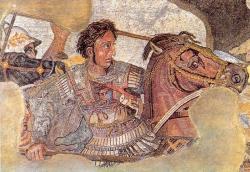 Alexandrie - A few days ago, online sources claimed that a team of archaeologists and historians from the Polish Center of Archaeology had found the tomb of Alexander the Great in a marbled and golden mausoleum in in downtown Alexandria, only 60 meters away from the Mosque of Nebi Daniel. -However, the site was not Alexander’s tomb and the story seems to be a hoax started by a parody website. The website didn’t give any clues about the fake story, or why this subject could be used for parody. Alexander the Great died in Babylon in the summer of 323 BC. In his brief reign he not only conquered the greatest part of the then known world, but brought vast changes to the regions of the empire that he built. His life and deeds, as well as his death and burial, became a legend for future generations, far beyond the lands he had conquered. Most popular theories suggest that Alexander might be buried in his homeland of Macedonia, or Egypt, either in Alexandria, or the the western desert oasis of Siwa.
Alexandrie - A few days ago, online sources claimed that a team of archaeologists and historians from the Polish Center of Archaeology had found the tomb of Alexander the Great in a marbled and golden mausoleum in in downtown Alexandria, only 60 meters away from the Mosque of Nebi Daniel. -However, the site was not Alexander’s tomb and the story seems to be a hoax started by a parody website. The website didn’t give any clues about the fake story, or why this subject could be used for parody. Alexander the Great died in Babylon in the summer of 323 BC. In his brief reign he not only conquered the greatest part of the then known world, but brought vast changes to the regions of the empire that he built. His life and deeds, as well as his death and burial, became a legend for future generations, far beyond the lands he had conquered. Most popular theories suggest that Alexander might be buried in his homeland of Macedonia, or Egypt, either in Alexandria, or the the western desert oasis of Siwa.
http://world.greekreporter.com/2014/04/30/lead-on-alexander-the-greats-tomb-is-a-hoax/
USA -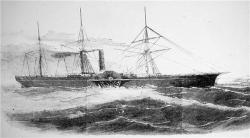
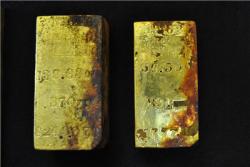 South Carolina coast. - Odyssey Marine Exploration (NASDAQ CM:OMEX) announced Monday that it recovered nearly 1,000 ounces gold from its first reconnaissance dive to the SS Central America shipwreck site last month. The wreck was discovered in 1988 and the Florida-based company said during the dive, gold bars and other artifacts were clearly visible on the surface of the shipwreck site. Archaeological excavation will now be conducted to recover the remaining gold. The Central America, carrying mainly mine workers and bosses returning east from the California gold rush was caught in a hurricane and sank on September 12, 1857 roughly 260 kilometres off the South Carolina coast. 477 passengers, mostly miners and businessmen returning east from California with their personal possessions and fortunes in gold accumulated after years of prospecting during the Gold Rush were on board the steamship during her final voyage.Odyssey believes the ship has one of the largest documented cargoes of gold ever lost at sea and such was the loss, that the salvage company says it contributed to the Panic of 1857. The five gold ingots were recovered and two $20 Double Eagle coins were also found. The gold bars were stamped with assayer's marks and weights that range from 96.5 to 313.5 troy ounces. Odyssey pegs the remaining passenger and commercial gold cargo at $760,000 in 1857 value. That could be worth more than $80 million in today's money and at today's metal prices, particularly if more of the coins retrieved are Double Eagles.
South Carolina coast. - Odyssey Marine Exploration (NASDAQ CM:OMEX) announced Monday that it recovered nearly 1,000 ounces gold from its first reconnaissance dive to the SS Central America shipwreck site last month. The wreck was discovered in 1988 and the Florida-based company said during the dive, gold bars and other artifacts were clearly visible on the surface of the shipwreck site. Archaeological excavation will now be conducted to recover the remaining gold. The Central America, carrying mainly mine workers and bosses returning east from the California gold rush was caught in a hurricane and sank on September 12, 1857 roughly 260 kilometres off the South Carolina coast. 477 passengers, mostly miners and businessmen returning east from California with their personal possessions and fortunes in gold accumulated after years of prospecting during the Gold Rush were on board the steamship during her final voyage.Odyssey believes the ship has one of the largest documented cargoes of gold ever lost at sea and such was the loss, that the salvage company says it contributed to the Panic of 1857. The five gold ingots were recovered and two $20 Double Eagle coins were also found. The gold bars were stamped with assayer's marks and weights that range from 96.5 to 313.5 troy ounces. Odyssey pegs the remaining passenger and commercial gold cargo at $760,000 in 1857 value. That could be worth more than $80 million in today's money and at today's metal prices, particularly if more of the coins retrieved are Double Eagles.
http://www.mining.com/shipwreck-hunter-recovers-first-gold-from-what-could-be-80m-find-63545/